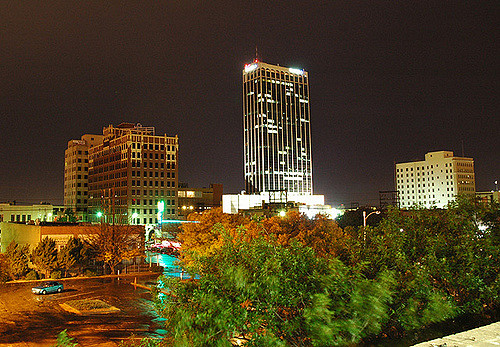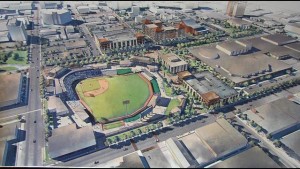Pollyanna or pragmatist?
I’ve wrestled a little bit with those conflicting notions for some time as I ponder the fate of downtown Amarillo.
I have used this blog as a tool to support efforts to revive the city’s downtown business/entertainment district. Yes, there have been some rough patches on that journey and there might be some more on the road ahead.
Through it all — and into the future — I’m going to continue to speak well of the efforts I’ve seen bear fruit already throughout Amarillo’s business district. Yes, I intend to look critically at decisions that might deter further harvesting of that fruit.
Some of my social media friends say they applaud my “optimism,” but keep raising doubts about the motives of the principal players involved.
They refer to allegations that real estate developers over-valued an abandoned downtown building that’s soon to become an urban campus for West Texas A&M University. Some keep bringing back the sour memory of that general development firm — the infamous Wallace Bajjali, which used to be headquartered in the Houston area.
I acknowledge being snookered by the snake oil peddled by David Wallace, one of the principal partners in that firm. He came to the Amarillo Globe-News and made an impassioned pitch that he and his partner, Costa Bajjali, were in business to improve communities. Wallace said something at the time that stuck with me: It was that he didn’t build a successful company by betraying the communities he served.
Eventually, WB went south. The one-time best friends split in a bitter dispute. The company vaporized. Another city that had invested heavily in the firm, Joplin, Mo., was left in the lurch. Amarillo, though, came out of that nastiness in relatively good shape.
The city has continued its march forward — without Wallace Bajjali.
Through it all, I’ve sought to lend support through this blog.
Am I a Pollyanna? I don’t believe so. But I am seeing some progress here that is beginning to resemble — on a smaller scale, of course — what I witnessed in my hometown of Portland, Ore.
Portland has developed an urban oasis in its downtown district. It didn’t happen overnight. It did occur, though, thanks to some vision by a young mayor who didn’t want the city to expand its highway network.
In the early 1970s, the mayor — Neil Goldschmidt — fought against construction of a freeway through the southeast portion of the city. He said the city instead should invest in public transportation aimed at building the downtown district.
The freeway wasn’t built. The city instead invested in its mass transit system into an urban model for other cities to emulate. It’s downtown district thrived.
I also should point out that in the late 1960s and early 1970s, Portland’s entrenched political establishment was as risk-averse as many are here in Amarillo. That aversion to risk, though, changed over time as the city began to transform itself.
Does this kind of effort translate precisely to what’s happening in Amarillo? No. Our city’s evolution has taken another form, although it, too, is a process that hasn’t been tried until now.
Amarillo has sought to focus its efforts on reviving the downtown district. It created some political infrastructure to make it happen. It formed Downtown Amarillo Inc. The city’s economic development corporation has been aggressive in promoting the downtown district. The city created a tax increment reinvestment zone that sets aside tax money earned from property value appreciation within that zone.
It created a strategic action plan. It proposed construction of a multipurpose event venue — aka “a ballpark” — downtown. The MPEV project has yet to begin. But it should. It must.
Private investors plunked down some serious dough to build a convention hotel, on which construction is now well underway — as is a parking garage.
Oh, and as luck would have it, Xcel Energy decided to vacate the Chase Tower and move into a shiny new office complex that’s also going up at this very moment.
Change is happening downtown and as I’ve believed for as long as I’ve lived here — more than 21 years — the entire city will flourish once its downtown starts to flourish.
I’m seeing evidence of it now.
Am I a Pollyanna for wishing nothing but the best for the city where we live? Well, I’m keeping my eyes wide open. The fiasco that developed with David Wallace’s empty promise has taught many of us a stern lesson.
I do, though, remain an unapologetic optimist as Amarillo’s core continues to strengthen and grow.

